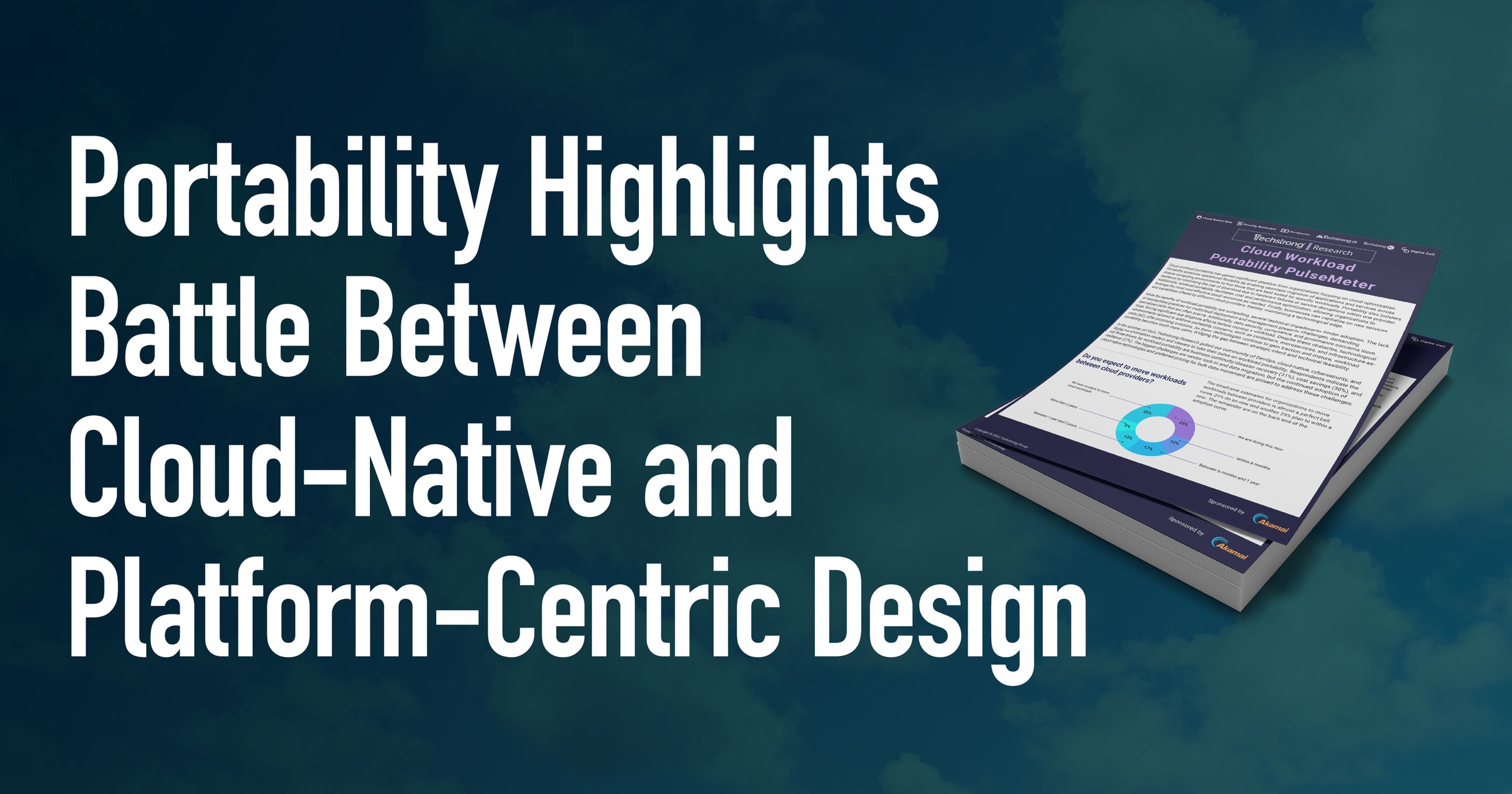Techstrong Research polled its community of DevOps and cloud-native readers and viewers on workload portability. And what they found reflects what customers say, with more than half of respondents saying they are currently moving or expect to move workloads among cloud providers.
What’s driving this hunger for the flexibility to move workloads? According to the study, the three biggest drivers for workload portability are business continuity/disaster recovery, cost savings, and resilience. Looking deeper at the data, something else jumps out: Nearly a quarter of respondents pointed to latency reduction and scalability as important factors in the need for greater workload portability.
In Techstrong’s analysis, portability is a vivid example of the contrast between proponents of cloud-native design and those pushing platform-centric design. Cloud providers shouldn’t dictate how you build and deploy your workloads. They shouldn’t lock you into platform-specific tools, which Techstrong Research found is the biggest challenge to workload portability. Instead, they should allow you to deploy and move those workloads where it makes the most sense for your business.
By working with a cloud provider that focuses on a cloud-native approach, you gain access to services and tools that are not only accessible but encourage you to move beyond a centralized cloud ecosystem that generally looks the same today as it did a decade ago.
You can access or download the Techstrong Research PulseMeter report here and learn more about how we’re making the cloud more portable here.






Comments